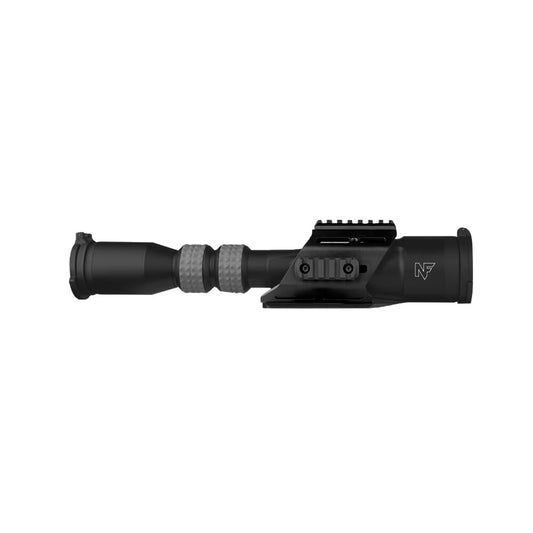

Nightforce CFS 6-36x50 Spotting Scope with MIL-XTs Reticle offers high-performance optics tailored for precision shooting. The first focal plane design ensures accurate reticle subtensions at any magnification level, making it easier to estimate distance and adjust for bullet drop. With a 50mm objective lens, this scope provides excellent light transmission, enhancing visibility in low-light conditions. The integrated accessory cage kit features five M-LOK mounting points, allowing you to customize your setup for various shooting scenarios.
Built for durability, the scope is nitrogen purged to prevent fogging and is waterproof and shockproof, ensuring reliable performance in diverse environments. Ergonomic controls with knurled rubber rings make adjustments quick and simple, so you can remain focused on your target. Weighing just 33.7 ounces, this scope balances portability with robust construction, catering to both competition shooters and tactical applications.
Features:
- STREAMLINED PROFILE for hassle-free transport and reduced snagging risk.
- ERGONOMIC CONTROLS located centrally with knurled rubber rings for easy adjustments.
- ACCESSORY CAGE KIT offers versatile attachment options, enhancing your shooting experience.
- MIL-XTs RETICLE designed specifically for compatibility with MIL-XT riflescopes, ensuring precision.
- FIRST FOCAL PLANE capability delivers accuracy at both low and high magnification.
- COARSE MIL-RADIAN GOAL POSTS facilitate effective communication between shooter and spotter.
- PATENTED DESIGN offsets reticle grid for a clear view of bullet trace at high magnification.
- EXCEPTIONAL OPTICAL CLARITY provides a sharp image for accurate distance estimation.
Technical Specifications Table
| Specification | Details |
|---|---|
| Magnification Range | 6x - 36x |
| Lens Diameter | 50mm |
| Close Focus Range | 20m |
| Exit Pupil | 6x - 5.8 mm | 36x - 1.3 mm |
| Eye Relief | 50mm |
| Field of View @ 100 yd | 6x - 37.2 ft | 36x - 7.2 ft |
| Weight | 33.7 ounces |
| Body Type | Straight |
| Item Condition | New |
What’s in the Box?
- Spotting Scope
- Accessory Cage Kit
- User Manual
- Lens Covers
- Padded Case
Customer Reviews
"The clarity of this scope is incredible! Perfect for spotting at the range." - John D.
"I love how customizable the accessory cage is. It makes all the difference!" - Sarah L.
"Fantastic optics and build quality. Worth every penny!" - Mike T.
FAQ
What is the maximum effective range of the Nightforce CFS 6-36x50?
This spotting scope is designed for long-range precision shooting, effective at distances exceeding 1000 yards, depending on caliber and environmental conditions.
How do I maintain the CFS spotting scope?
Regular cleaning of the lenses with a microfiber cloth and appropriate lens cleaner is recommended. Store in a cool, dry place and avoid exposure to extreme temperatures for optimal longevity.
Similar Models
Looking for more advanced optics? Explore our complete Nightforce collection, including models like the Nightforce ATACR for enhanced long-range capabilities and the Nightforce NXS for robust performance in challenging environments. Discover the ideal optic for your next adventure!
You May Also Like
Here’s some of our most similar products people are buying. Click to discover trending style.







